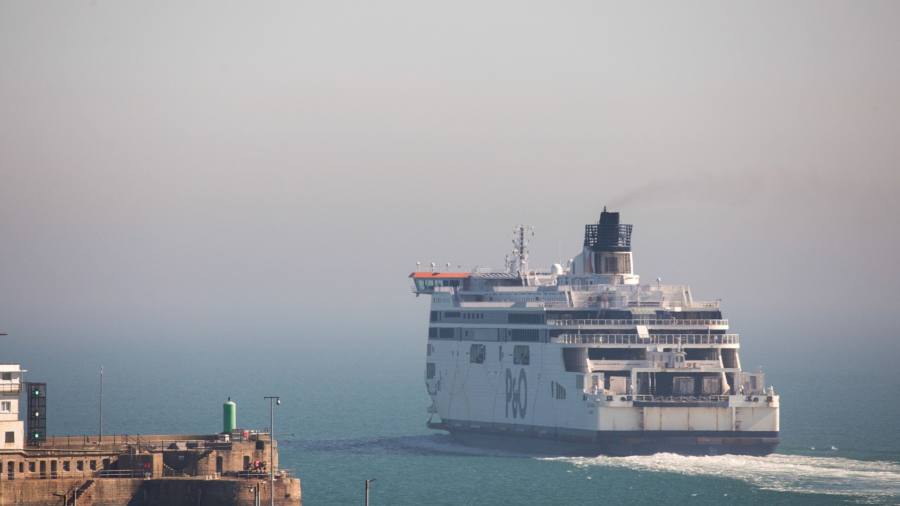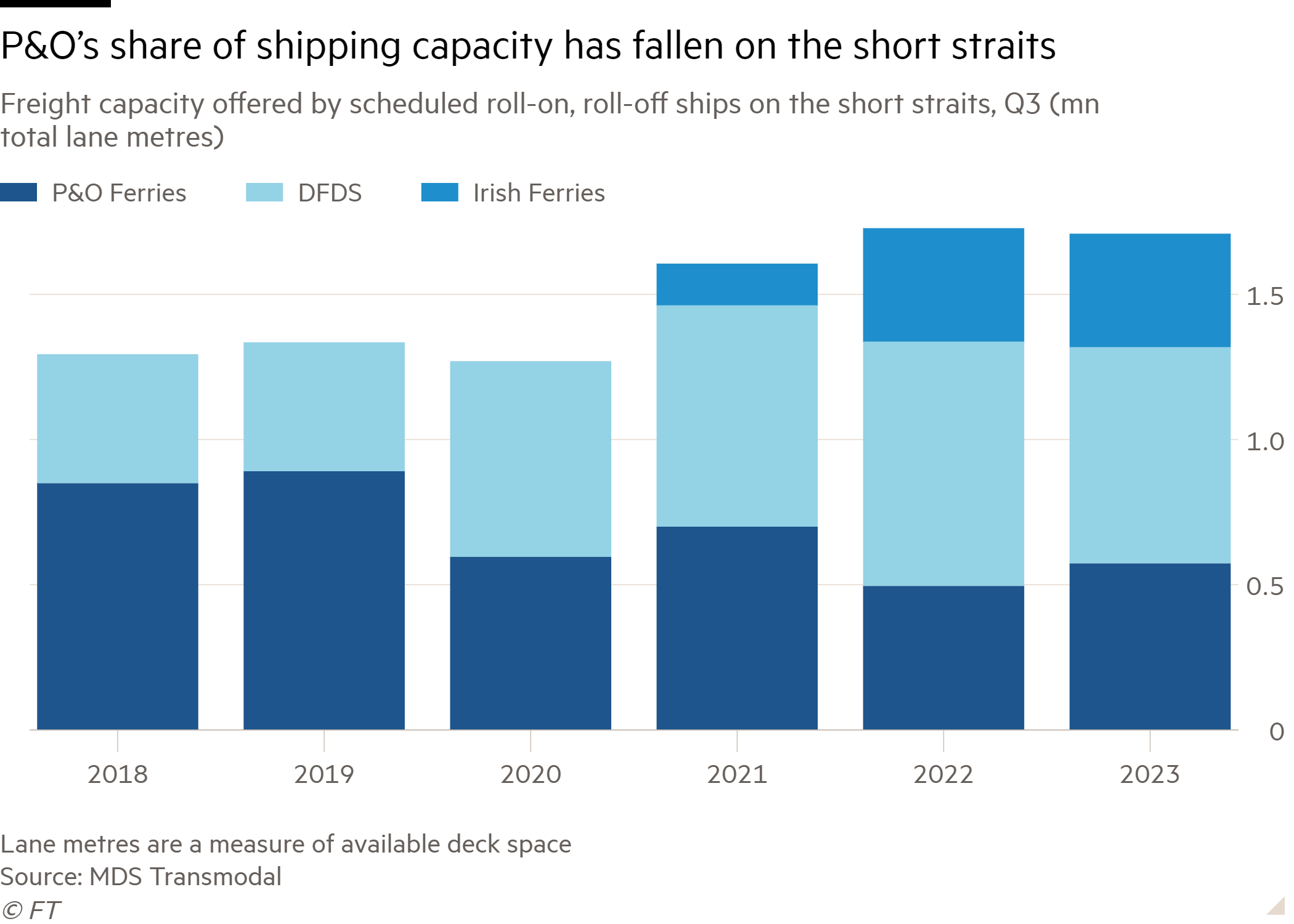
Receive free P&O Ferries updates
We’ll send you a myFT Daily Digest email rounding up the latest P&O Ferries news every morning.
P&O Ferries has lost significant ground in the UK freight market since it was acquired by its Dubai owner, according to new analysis that underlines the increasing pressures that pushed the company to sack hundreds of sailors last year.
The UK shipping group, which sparked a political firestorm with the sackings, recently came under criticism again after announcing it had been forced to close its Liverpool to Dublin service.
According to shipping consultancy MDS Transmodal, P&O was responsible for 34 per cent of the cargo capacity scheduled to travel the short straits between Kent and northern France in the third quarter this year, on “roll-on, roll-off” ships that ferry both tourists and freight trucks. This was sharply down from 2019, the year DP World took over P&O, when the ferry company had roughly two-thirds of the share.
Over the same period, P&O’s share of shipping capacity for North Sea trade between the UK and Europe has almost halved from 17 to 9 per cent. Its share of capacity between Great Britain and the island of Ireland has dropped from 27 to 18 per cent.
The decision to close down the Liverpool to Dublin route, which P&O said was made after Liverpool port operator Peel Ports decided “not to renew its contract” and left “no viable alternative”, will further hit the shipping services offered by the ferry group.

“P&O is no longer a major player in European ferry trade,” said Mike Garratt, chair of MDS Transmodal. “You have to look at who is buying new ships. [With the exception of two new ships on the Dover to Calais route], it’s not P&O . . . It’s not a company that seems to be going places.”
The data shows how P&O has faced increasing competition from low-cost operators such as Irish Ferries. After entering the Dover to Calais trade route in 2021, the company is now responsible for up to 23 per cent of shipping capacity on the short straits.
Mick Lynch, general secretary of the National Union of Rail, Maritime and Transport Workers, said that P&O was not the only company undermining working standards, adding the company was being “squeezed out of the freight market” by cut-price rivals. The UK maritime sector faced “a race to the bottom”, he warned.
Unions criticised P&O last month over the Liverpool and Dublin route, although the company said that workers would be redeployed elsewhere.
P&O said it would be “misleading” to judge business performance by its shipping capacity. The ferry industry has long struggled with overcapacity and P&O said it was “better matching capacity to demand” to trade more efficiently than its rivals. The company said that this year it was moving an average of 92 freight units per shipment between Dover and Calais, compared with 70 in 2022.
P&O added that while capacity had fallen, it remained the leader for trade between Dover and Calais, delivering up to 46 per cent of freight volumes so far this year. This marks an improvement from 2022, when the company launched a restructuring effort.
But it was down significantly from 67 per cent during the whole of 2019, when only two ferry operators served the trade route, according to industry data.
P&O’s profitability has also been dealt blows by Brexit, which led to EU-bound cargo being diverted from the UK, and the Covid-19 pandemic, which hit demand for passenger transport. The company said that losses before tax more than tripled to £374.5mn in 2021, the most recent year that it has reported results for.
As P&O sought to cut costs and return to profitability, the company prompted a public outcry last March when it sacked about 800 crew members, some via a video message. Its chief executive subsequently admitted the company had broken UK employment law.
Additional reporting by Simeon Kerr in Dubai